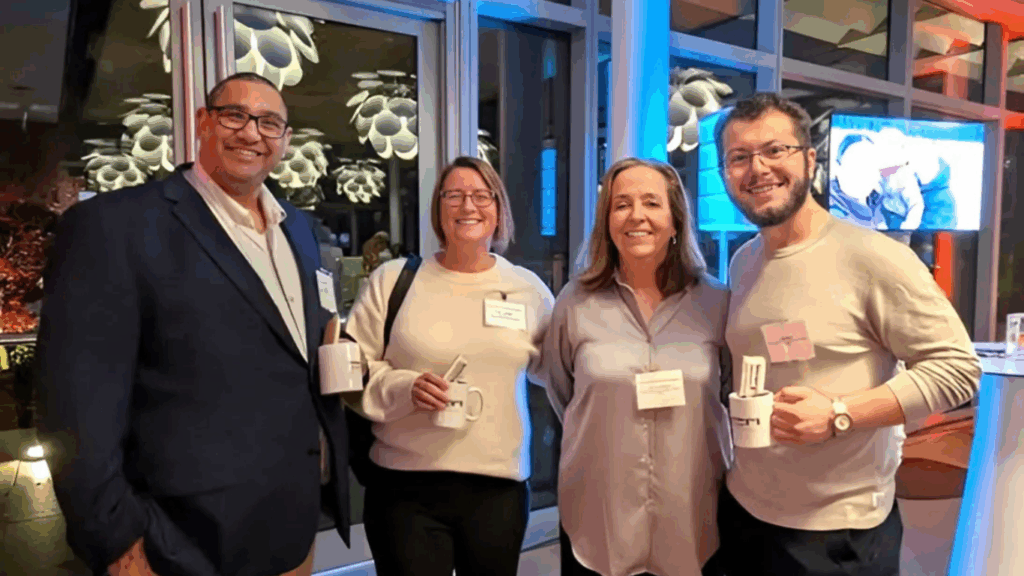Occupational therapist Gina Fernandez explains what OT is, who it helps, and the qualifications required.
What is occupational therapy and what qualifications do OTs need?
Occupational Therapy (OT) is the art and science of enabling individuals to participate in meaningful activities or occupations by using evidence-based practice and clinical reasoning. Occupations vary: a child’s occupation may include playing on the playground, a young adult’s occupation may include attending school or working, a mother’s occupation may include looking after the household and her children, and a retiree’s occupation may be that of a golfer or grandparent.
In Canada, every occupational therapist holds a bachelor’s degree or an entry-level master’s degree in Occupational Therapy. Occupational therapists in British Columbia are required to be registered with the College of Occupational Therapists of British Columbia (COTBC).
What type of conditions and diagnoses can you help with?
We can help everyone … and with everything! It is common to see OTs in the hospital examining a client’s thinking and memory, preventing skin wounds by prescribing special cushions or mattresses, prescribing wheelchairs or equipment such as grab bars or bath seats for the bathroom, making splints for hand injuries, or performing swallowing assessments. Some examples of conditions and OT treatment for clients in the community include: home safety assessments for clients with dementia, running groups for clients with mental health issues, providing rehabilitation or exercises at a clinic for clients with a stroke or brain injuries, testing power or manual wheelchairs for clients with spinal cord injuries, vocational rehabilitation or workplace modifications for injured workers, teaching social skills to children with autism, teaching children with attention difficulties how to focus at school, and prescribing bathroom equipment for patients with hip replacements or cerebral palsy.
What happens during a typical OT session?
Every OT session differs! However, the sessions almost always include an interview of the parents or caregivers, and some activities (a mix of tabletop and gross motor activities). It is important to bring along any reports from other health care professionals such as psychiatrists, pediatricians, optometrists or ophthalmologists, speech-language pathologists, physiotherapists, or previous occupational therapists. It’s also a good idea to bring along your child’s favourite toy, so as to allow your child to feel at ease during the initial part of the session. Depending on the OT’s preference, you may be asked to wait outside the room during the assessment, or you may be encouraged to stay for the beginning part of the session until your child is comfortable interacting with the OT.
My son spent his first few years in an orphanage. He still self-stimulates by rocking and finger-sucking. Is this harmful?
Children and adults use various behaviours to soothe or stimulate themselves. The finger sucking behaviour could be harmful to his teeth, but that would be a question for the dentist. Rocking, in itself, is not detrimental to his health. However, if any behaviour impacts or interferes with his life – if it poses a safety issue, for example, or prevents him from making friends due to social norms – then an OT could definitely help with alternative ways of calming or stimulating him. We can also provide recommendations to you about how to schedule his day to decrease the likelihood of this behaviour by conserving his energy or pacing his day more appropriately.
Can you help with food issues such as food avoidance, overeating, and food hoarding?
Absolutely! In regards to a food avoidance assessment, this is a process that involves collaboration with the dentist and the pediatrician (to see if there are any pre-existing medical conditions). An oral-motor exam would be conducted by the OT, and the child’s swallowing skills would also be assessed because the muscles and coordinated movements of the lips, tongue, mouth, and throat often play a role in food avoidance. Sensory aspects of food would also be examined to see if the child is avoiding certain types of foods due to taste or texture. Overeating and hoarding may be occurring due to emotional or other difficulties in the child’s life, and an OT could provide various types of treatment and alternative strategies.
Do OT professionals work in schools?
Yes, we definitely do! OTs that work in the public sector such as the health authority or child development centre perform assessments to assess children’s functioning in the areas of fine motor skills such as hand-eye coordination, coordination of both hands together, in-hand manipulation of objects, precision and accuracy, and hand strength; gross motor skills such as jumping, visuospatial functioning; and attention. OTs will also go into schools to help with implementation and training staff to utilize manual lifts, transfer of children in and out of wheelchairs and on and off toilets, and ensure elevators are accessible.
My child is having trouble staying still in the classroom and paying attention. What would you recommend for him?
There are various tools and strategies that can help children pay attention. After an assessment is performed by the OT to discover why your child is having difficulty paying attention or staying still, the OT may recommend equipment that will allow the child to move about and still pay attention. The OT may also provide strategies to enable the child to sit still for periods of time if this excessive activity is having a negative impact on his school or social life. These strategies may include providing the child with extra breaks to improve focus, or with intense exercises, such as jumping, or running games prior to table-top activities, to allow the child to expend his or her energy and to tire the child out.
My child chews everything, including fabric and other non-food items. We’ve tried Chewelry, but she chews through it in less than a day. What do you suggest?
My first piece of advice would be to ask the dentist about the risk of her teeth being damaged and how this chewing may impact her adult teeth as they come in. Next, an OT can perform an assessment to discover what is triggering this behaviour of excessive chewing. Following this, the OT may provide an alternative piece of equipment (since Chewlery didn’t work), or provide a different strategy to address the excessive chewing, such as teaching a more appropriate way to react to stress or anxiety. The reasons for chewing items vary extensively, and so do the treatments to address the behaviour.
My son is 18 months old and has trouble drinking. He chokes on water and sometimes gags on food. What can I do to help him?
You can take your son to see an OT to have a swallowing assessment performed to see if he is choking or gagging due to difficulties with swallowing. The OT will check to see if he is choking due to the rate of flow of the liquid into his mouth and throat. This swallowing assessment would also include an oral-motor exam and the child’s muscles and coordinated movements of the lips, tongue, mouth, and throat would be examined. Following the assessment, the OT can then make recommendations depending on what the assessment reveals.
Are children with FASD more likely to require OT? How can it help?
Yes, children with FASD are more likely to require OT. Children with FASD may have difficulty with fine motor skill tasks such as writing, drawing, eating, doing up/undoing buttons or zippers, opening containers, and utilizing scissors. They often also have difficulty with memory, attention, communication, impulse control, hand-eye coordination tasks, and sensory processing. OTs provide treatment for those difficulties. The treatment may include exercises to improve hand coordination and strength; providing adapted scissors, writing grips, or pencils; breaking down tasks to work on basic aspects first; using a timer for breaks/tasks; and utilizing multi-sensory approaches to learning.
What if it’s difficult to get a child to a professional, or if a child is resistant to the process?
Parents can ask OTs to come to their home! OTs understand that it may be difficult to get your child to a clinic. Parents can also let the child know that when he or she goes to the clinic, the session will be filled with new and exciting toys and it will feel like a one-hour play session! OT’s use play as an assessment tool to discover which aspects of tasks children struggle with. If the child is still resistant, parents could inquire about bringing along the child’s sibling, if they have one, as this may encourage the child to participate in the session.
How much does OT cost?
OT services in a hospital or home health community team are free in B.C. Private clinics and practitioners charge anywhere from $100 – $150 per hour, depending on the type of service and if driving time is required. Report writing is billed at the same cost. Extended health benefits or insurance plans may cover the cost of OT but MSP currently does not.
What should families look for in a reputable OT?
Families should look for an empathetic, compassionate individual who is comfortable communicating with family members and interacts well with other health care professionals. The OT should create goals with input from the child and his or her family or caregivers and create a treatment plan that is feasible for the family. A reputable OT should not have any restrictions on his or her ability to practice and should be licensed in the province of BC. You can check this by contacting COTBC. It is not mandatory for OTs to complete continuing education courses every year, but a reputable OT should have some recent courses in his or her field of practice.
Gina’s background as an occupational therapist includes extensive work with children with physical and cognitive difficulties, palliative care and oncology, community mental health, and eldercare. Currently, she divides her time between teaching an Occupational Therapy/Physical Therapy Assistant program and working at a private practice. She is also an avid dancer who performs and teaches Indian dance classes throughout BC. Contact her at gina.ubc.ot@gmail.com.





